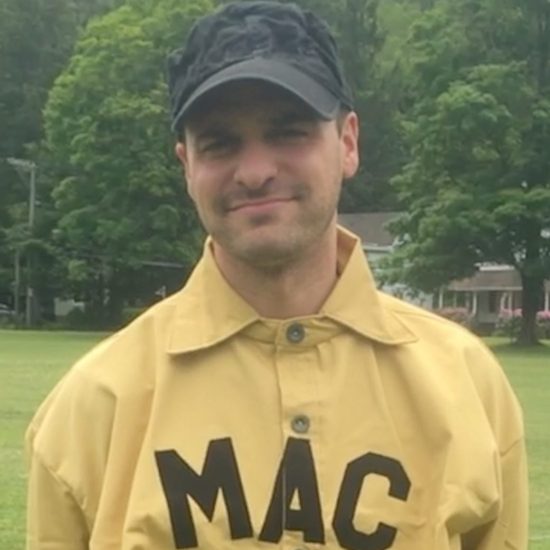I sometimes think that the work done by minor league analysts gets underutilized once a player reaches the majors. The prospect tool grades and, to a lesser extent, the minor league stats should be used to help bridge the knowledge gap until the player is established in MLB. They didn’t suddenly become a different player once they made the jump and MiLB analysts/scouts are good at what they do.
With 160 career MLB IP, Ian Anderson falls into this bridge area where he is likely similar to what he was in his last regular time in the minors in 2019. With a 3.25 ERA and 1.20 WHIP, he has been successful thus far. If he can improve his command, he will bring his WHIP down and could become a true ace.
Prospect Tool Grades
Anderson hails from Upstate New York. Due to the climate-shortened playing seasons, players from this area are at a disadvantage. (This, and this alone, is what prevented me from reaching higher levels, I assure you.) Anderson was able to overcome this handicap to be the third overall pick in 2016. He rose through the minors a bit more quickly than most expected to make his big league debut in 2020.
For FanGraphs, the first number is the present grade and the number after the slash is a future grade. The two public scouting services generally agree. They gave him a well above average changeup and above average in all other areas.
Pitcher List’s Zach Hayes did an excellent pitch metrics analysis shortly after Anderson’s debut in 2020. Andy Patton did a GIF Breakdown of his debut in 2020. Nick Pollack did a Video Breakdown in September 2021. I encourage you to check all those out.
Those analyses take an execution-based approach and do not (or could not yet) look at a more robust sample size of outcomes.
MLB Pitch Outcomes
Sources: Baseball Savant, FanGraphs, Brooks Baseball, and Pitcher List. Percentile ranks are in blue and MLB averages are in red.
The outcomes (over what amounts to roughly a full season—he missed 7 weeks in 2021 with right shoulder inflammation) point to a well above average fastball and changeup, with a middling curveball. Based on this, his pitch usage seems about right. These outcomes also jive with his tool grades.
Command
The walk rate is poor and Eno Sarris’ Control+ showed Anderson as being slightly below average in 2021. Control/command typically improves in the early stages of a career, so there is hope that Anderson can bring his BB% down closer to 8%. However, his walk rates in the minors ranged from around 8.5-14.0%, and that 8.5% came in 2016 Rookie ball.
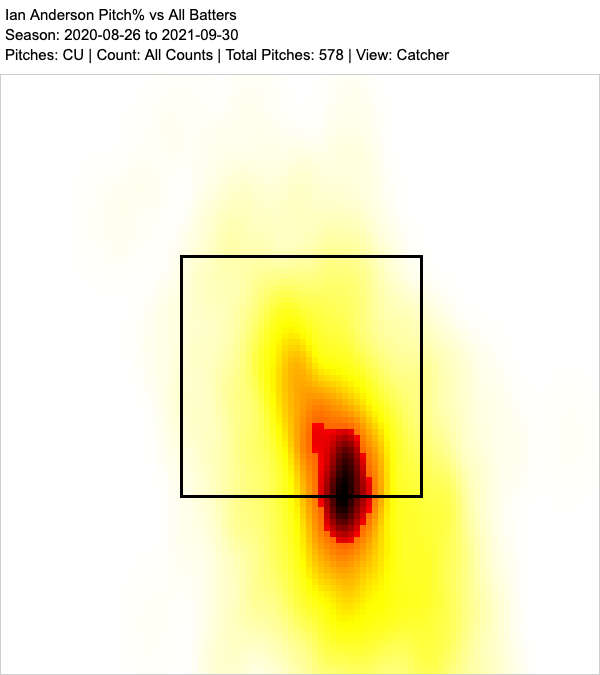
Source: FanGraphs
This looks real nice for curveball locations. The only potential problem I see is the heat maps vs. RHBs and LHBs are virtually identical. He seems to be able to nail that area consistently, but he might not be able to move it around at will. This may lead to some predictability. I would still consider this a minor issue.
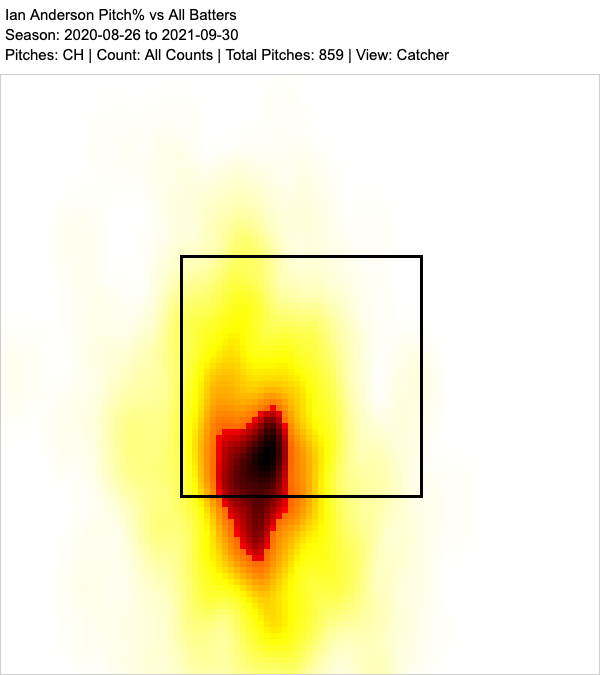
Source: FanGraphs
Similar story to the curveball here. He doesn’t throw the changeup as much vs. RHBs, but he does a slightly better job getting the pitch down. It seems like he can leave it up a bit too much vs. LHBs. This is pretty picky though as they are generally well-located versus both batters and get very good results.
Fastball Command
Let’s break down fastball locations a bit more.
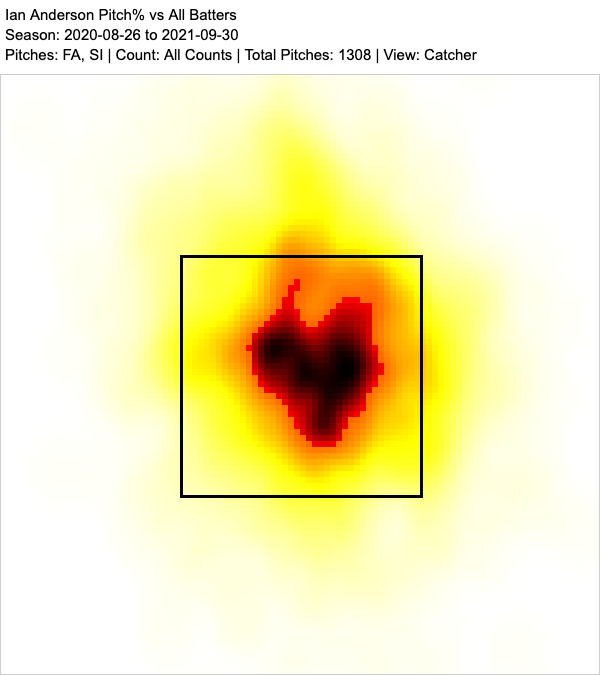
Source: FanGraphs
Above is the heat map for all fastballs (he has a few likely misclassified sinkers) Anderson has thrown in his career. He does use it to get a first-pitch strike, with some success, but this is not what you want to see in any count.
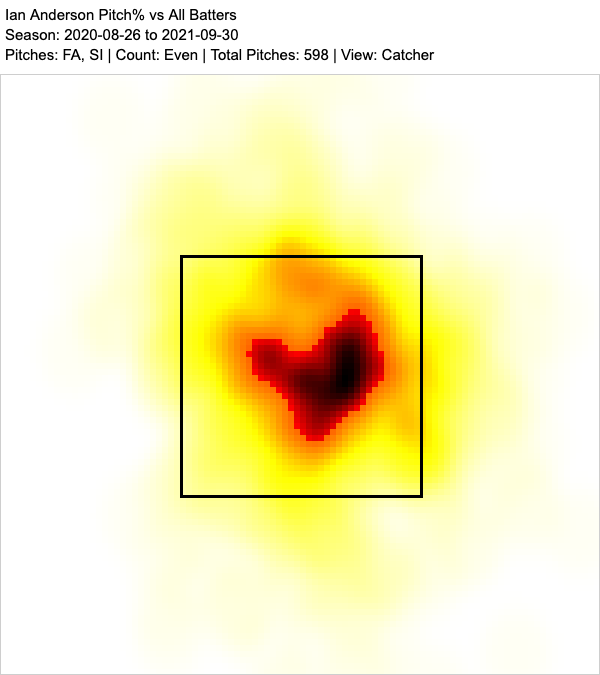
Source: FanGraphs
This is the heat map of fastball locations when in even counts. Presumably many of these are get-ahead 1st pitch fastballs. As detailed in Zach Hayes’ article, he does get elite extension on his release, but anyone is playing with fire with fastballs down the middle.
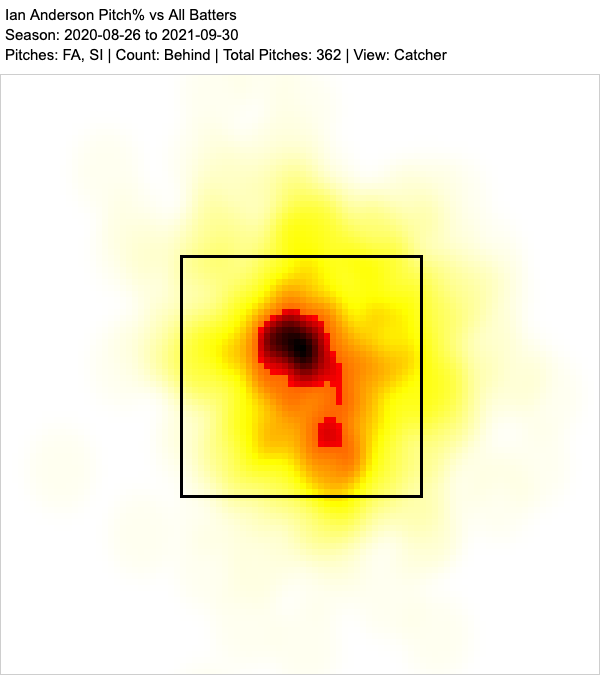
Source: FanGraphs
More of the same here when he is behind in the count. When he throws his fastball he is relying on his great extension and high release rather than location.
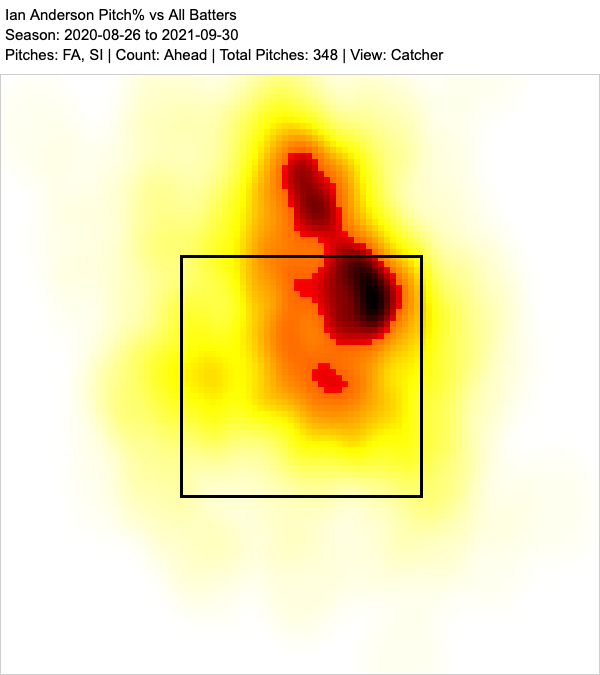
Source: FanGraphs
He does a really nice job spotting his fastball up when ahead in the count. I won’t include all of the heat maps here, but the further ahead he is the higher he goes.
Three-Ball Counts
I decided to look at his pitch location heat maps in three-ball counts to see what is directly leading to walks.
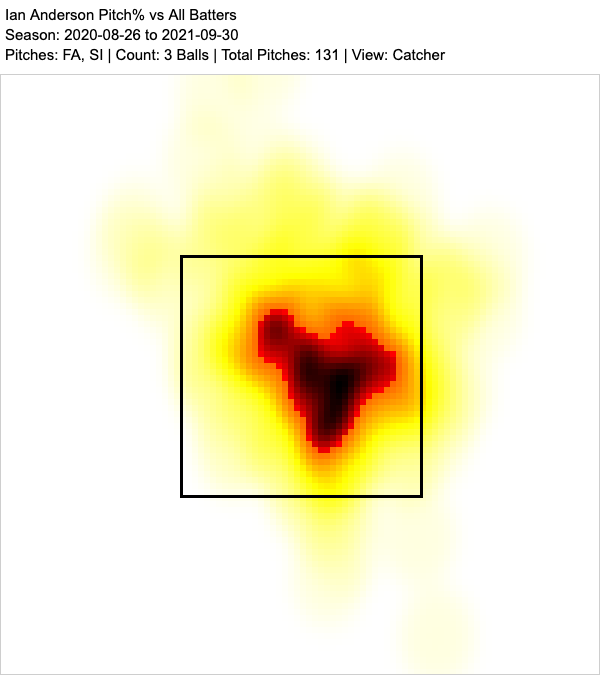
Source: FanGraphs
Same fastball location story here. He tries to steal strikes with a deceptive fastball.
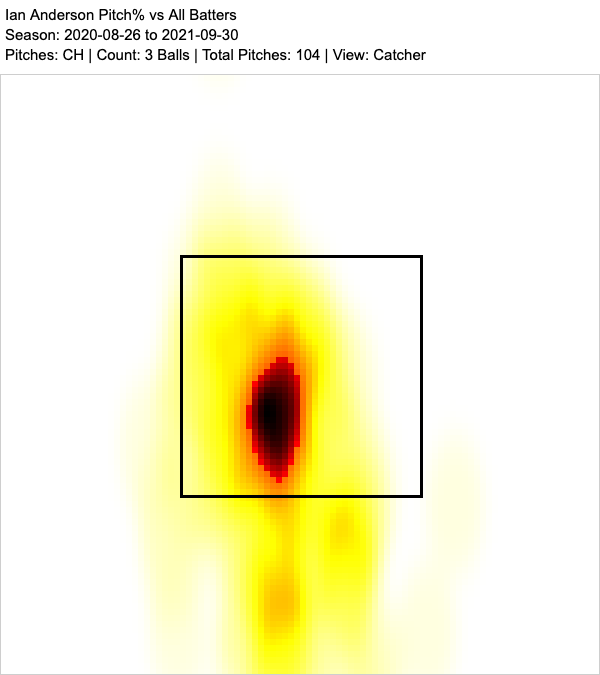
Source: FanGraphs
With these three-ball changeups it looks like he is trying to take advantage of hitters targeting fastballs. There is an orange area well below the strike zone. These were probably walks when he was being cautious.
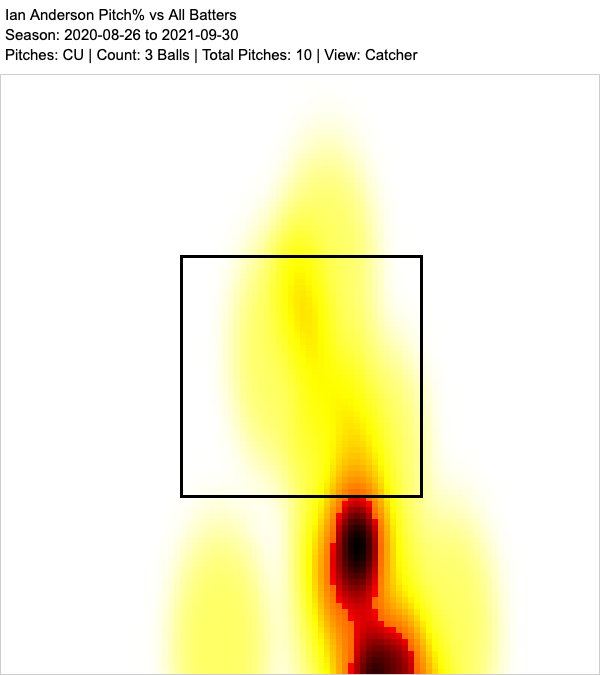
Source: FanGraphs
He’s only thrown 10 three-ball curves, but they were nearly all below the zone.
Conclusion
As a prospect he was given an above-average command grade but has had a below-average walk rate thus far. Based on the location heat maps, I think this is largely by choice. Many of his Statcast pitch metrics don’t stand out. He does have a deceptive release and somewhat unique fastball and changeup qualities that aren’t picked up by spin metrics. He is willing to go outside the zone on three-ball counts with his curveball and changeup to limit damage. If he wanted to reduce his walk rate he could be more aggressive throwing them in the zone on three-ball counts.
He definitely needs to improve his fastball command. He throws too many in the heart when even and behind. However, his locations when ahead tell me that he is capable of spotting it better in other counts.
There is room for modest overall improvements, but I think he understands he has good, but not great stuff and is willing to give out walks to limit major damage. Thus far in his young career, he has done so. Sometimes you need to recognize your limitations.
Photos by Icon Sportswire | Adapted by Doug Carlin (@Bdougals on Twitter)

